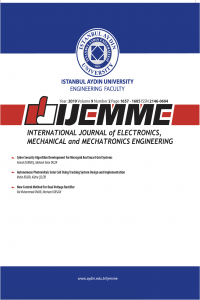EVALUATION OF PRIVATE SCHOOL LOCATION IN THE ISTANBUL METROPOLITAN AREA
EVALUATION OF PRIVATE SCHOOL LOCATION IN THE ISTANBUL METROPOLITAN AREA
Primary education Private education, Location, Urban development, Istanbul,
- ISSN: 2146-0604
- Başlangıç: 2011
- Yayıncı: İstanbul Aydın Üniversitesi
EVALUATION OF COMPUTER ALGEBRA SYSTEMS USING FUZZY AHP
Ilham N. HUSEYINOV, Feride S. TABAK
ANALYSIS AND PERFORMANCE MEASUREMENT OF EXISTING SOLUTION METHODS OF QUADRATIC ASSIGNMENT PROBLEM
Morteza KARAMI, Sadegh NIROOMAND, Nima MIRZAEI, Bela VIZVARI
Bahareh Baghani BAJGIRAN, Majid AFSAHI
PARAMETER TESTS FOR IMAGE SEGMENTATION OF AN AGRICULTURAL REGION
FORMATION OF WATERSIDES ON THE BOSPORUS AND SPATIAL DEVELOPMENT OF BOSPORUS WATERSIDE GARDENS
SUBSTRATE INTEGRATED WAVEGUIDE BAND-PASS FILTER WITH CPWG FED FOR RADAR APPLICATION IN X-BAND
Abbas AYARAN, J. Bagheri K., S. GOLMOHAMMADI3
EVALUATION OF PRIVATE SCHOOL LOCATION IN THE ISTANBUL METROPOLITAN AREA
Mehmet TOPÇU, Fatih TERZİ, N. İpek ÇETİN, Vedia DÖKMECİ
THE DETERMINATION OF GREEN AREAS IN CITY FROM THE VIEW POINT OF CITY FURNITURE IN EMINONU
